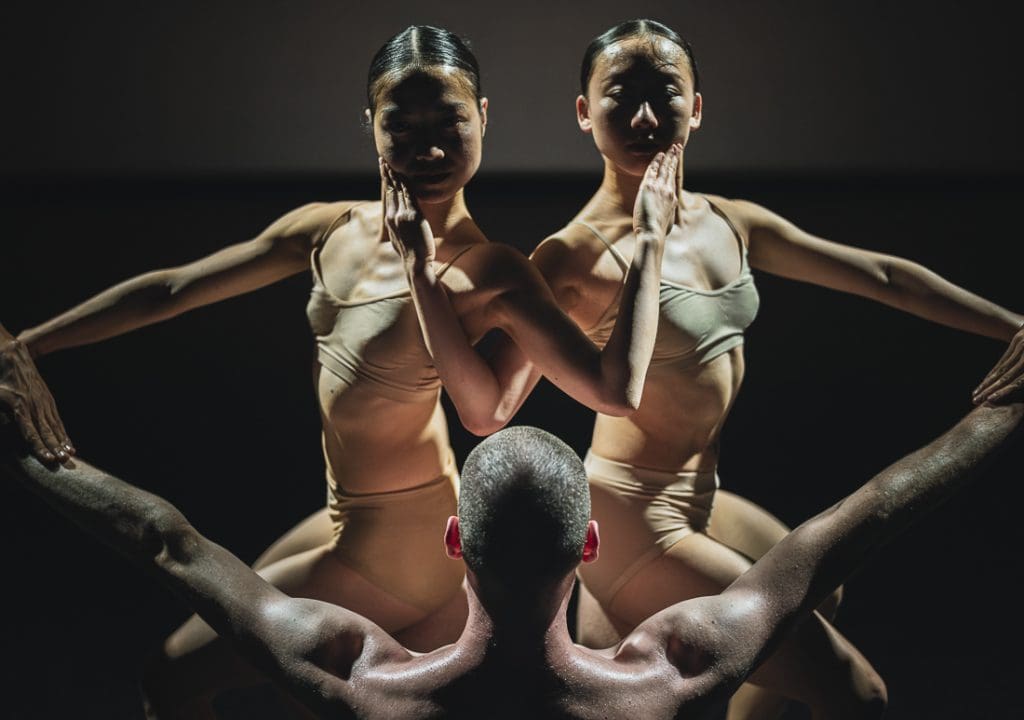Dance company NDT2 showcased on its current visit, three works by choreographers Crystal Pite, Eduard Clug, and Nadav Zelner, an Israeli choreographer who is a rising name on the international dance scene.
The company itself -NDT2- is an offspring of the illustrious NDT, founded as a modern dance company in the late fifties, yet it established its solid position in the mid-fifties with a non-conformed repertoire. The younger company NDT2 aims to nurture a cast of chosen dancers who are more involved in artistic cooperation.
The evening opened with ‘Ten Duets on A Theme of Rescue’ by Crystal Pite. A very short work by a small but strong cast of five dancers. The mildly conservative choreography was composed of ten short scenes, that contained subtle references to its title. Pite created fluid passages between the duets and kept a consistent elegant stylized flair.

The regimented piece ‘Cluster’ by Eduard Clug brought a shift of moods; athletic, pulsing, and more than anything else, it reflected unusual concern with form, not in the sense that the Bauhaus innovators had tied form with its content. On the dance’s stage, there is a direct relation between the choreographic structure to the body’s movement which is echoed in space. The formality of the dancers’ progression on linear ’floor patterns’ was a touch rigid, yet by the end, the effort culminated in a unique composed live sculpture in the style of Tableau Vivant- a sculptured frozen picture by people- often portrayed as entertainment in French courts centuries ago. Clug’s final scene for his creation “Cluster” was the most sumptuous one could imagine.
Now was the time for ‘Bedtime Story’ by Nadav Zelner. The title hardly described the content. Set to Arabic music and songs from North African countries, mostly bordering on the Sahara belt, like the Gnawa. Accompanied by drums and typical wind instruments. The polite, rather adult audience started moving to the bit in their chairs and didn’t stop until the show was over. The ovation was equally loud, for a perfectly good reason.
Fourteen dancers came on stage. They were the same ones we have seen earlier but they were in a completely different state of mind. It was hard to believe that they were part of the same company. They jumped, smiled, and loosened their limbs with what seemed to be spontaneous movements at a crowded party with a hot DJ.
Yet in this case, Zelner had his hands on the controls, with smart swift composition changes, fusing tribal nuances and sleek city actions. A mixture, no one could resist.